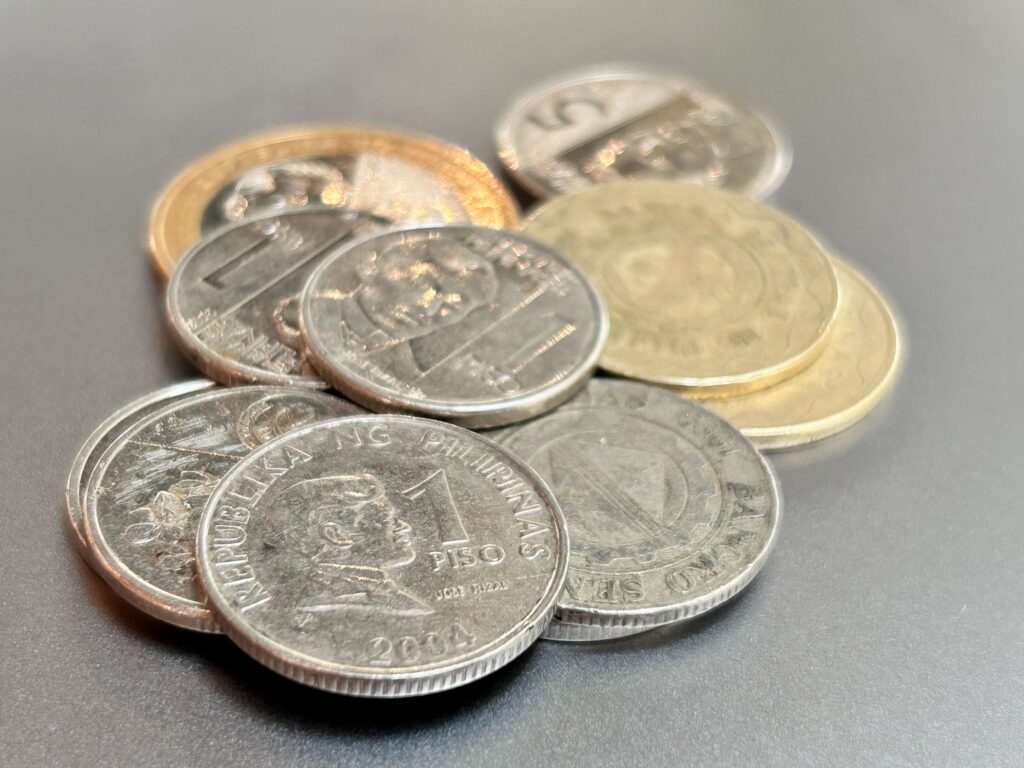
A photo of Philippine coins from one peso to 20 pesos. CDN Digital photo by Niña Mae Oliverio
CEBU CITY, Philippines — As the inflation rate in Cebu continues to soar, Cebuanos also continue to struggle with the increasing prices of goods and commodities.
During the data dissemination for inflation on Wednesday, April 17, a statistical specialist of the Philippine Statistics Authority (PSA) Cebu Province revealed that the purchasing power of the peso (PPP) has plummeted to 83 centavos from January to March 2024.
According to the PSA, the PPP shows how much peso in the base period is worth in the current period. The value of P1 in 2018 now equates to 83 centavos in March 2024.
READ:
Impact of extreme heat: soaring prices as vegetable supply drops, vendors fear for livelihood
Cebu Province inflation rate soared in March 2024
Inflation: Behind the numbers are real people struggling to make ends meet
This also indicates that Cebuanos now have to pay more when they purchase items, compared to 2018, said Melchor Bautista, PSA Cebu’s chief statistical specialist.
“For example, sa 2018, makapalit pa ka’g two kilos of rice sa P100, karon it needs more peso para makapalit ka og two kilos of rice, so mao na siya nga niminos ang power sa peso,” Bautista said.
Bautista attributed this to the inflation.
“Usually, the purchasing power goes with the inflation,” Bautista added.
With the deflating value of the peso, consumers struggle to meet ends. Which means budgeting becomes more challenging.
Bautista, who also has a master’s degree in economics, said that in the economics’ view, conservation is a must in times of crisis. A tool to survive the soaring inflation rate in Cebu.
“We have to buy enough in accordance with our needs,” Bautista said in mixed English and Cebuano.
He also urged the consumers to spend their money wisely on things that matter.
Cebu Province’s inflation rate in March 2024 increased to 0.3 percent from -0.2 percent in February 2024, according to the recent data presented by Bautista on Wednesday.
Difficult for consumers
Several consumers had strongly experienced the impact of peso’s purchasing power.
In an interview with CDN Digital with various individuals who were purchasing some items at the Carbon Public Market in Cebu City, they said that they are struggling with the soaring prices of goods, commodities, and services.
“Ang P1,000 before, daghan gyud kaayo na. Karon, pila nalang ka item imong ma bit-bit, usa nalang ka bolsetahan,” said Aytch Recla, 38, from Consolacion, Cebu.
In 2018, Recla said she could purchase a sack of rice from her P1,000, but now, she could only buy rice by kilos in that amount.
Recla agreed that the purchasing value of the peso has decreased.
Moreover, she said that she always budgets her money well to be able to purchase the necessary items for her family.
“Budget-budgeton nalang intawn ang sweldo para maigo gyud sa usa ka semana,” Recla said.
This year, she said that P5,000 is not enough when she buys groceries, especially since she also has a store to manage.
“Sauna dako na kaayo na ang P5,000. Karon ang P5,000 di mada kung mag open lang gyud ka’g gamay nga tindahan, di mada,” Recla said.
Students also struggle
Some students who were studying in a university in Cebu City, also felt the impact of the increasing prices.
Chelsea Ramos, 21, and Mycael Andre Zoleta, 21, both third-year college students, said that their P100 is no longer enough for a day allowance.
“Sa pagkakaron dili jud. Gamay ragyud ang 100…mas daghan jud ang mapalit sauna. Ang mga presyo sad ron nagkataas, mas gamay nalang jud ang mapalit sa 100,” Ramos said.
READ: How are Filipino students coping with inflation?
Meanwhile, Zoleta, who is from Barangay Sirao said that he would need at least P500 allowance for a day because P100 is automatically deducted for one meal.
Zoleta added that P100 is not enough to pay for both his meal and transportation fare.
“Mag need gyud og dako-dako nga allowance,” Zoleta said.
Ramos, who resides in Tisa, Labangon, on the other hand, said that she would need at least P250 or P300 allowance for a day.
Both of them said that the transportation fare has greatly affected their daily expenses. They noted that in 2018 they used to pay P6 to P7 for a jeepney, but now it has become P13 to P15.
How does inflation affect the purchasing power of peso?
According to Isabelita Labus, an instructor who teaches economics in one of Cebu City universities, when the inflation rate increases, the purchasing power of peso decreases.
“It has opposite effect kay magkamahal ang paliton, magka minos ang purchasing power. If you notice, tan-awon nimo ang [result] diha sa inflation, magkamubo gyud ang purchasing power,” Labus said.
Labus, who also used to work in the National Economic and Development Authority in Central Visayas (NEDA-7), said that low-income families are the ones greatly affected by the soaring prices.
“Supposedly, kung [mutaas ang] inflation, angay lang pod nga pasakaan lang pud ang wages. Pero musamot na siya ang inflation,” Labus said.